There has been a lot of confusion and concern about the new LEGO Powered Up system as well as other powered and robotics systems that LEGO recently released or planning to release in the near future. This is understandable, as besides LEGO Powered Up, we also recently got LEGO BOOST and LEGO Education WeDo 2.0. In addition, LEGO Education SPIKE Prime was just announced, and LEGO Technic Control+ is coming soon. At the request of the LEGO fan community, the LEGO Powered Up team provided a short update about the new system.

First of all, there is a new website dedicated to the LEGO Powered Up components, where they highlight most important benefits of the platform and show what can be done with components when you buy them separately. Once you visit the website at LEGO.com/themes/Powered-Up, you can click on each component to learn more about how it works and what can be achieved with it. There will be also app update where you can newly code your own creations – create your own code, modify it, save it and come back to it. This mobile app is available at the App Store and Google Play, but models can be also controlled by the LEGO Powered Up remote control via Bluetooth.
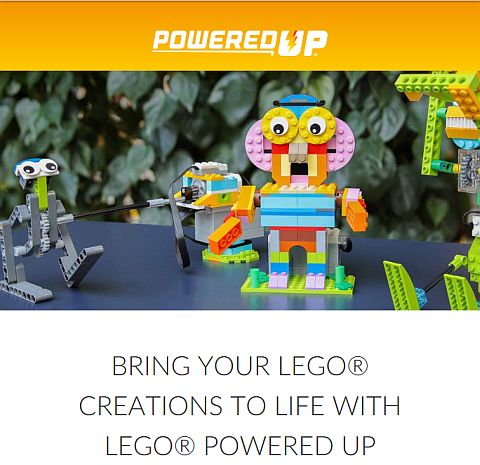
So far, the LEGO Powered Up system is used in the #76112 LEGO DC Super Heroes App-Controlled Batmobile, the #60197 LEGO City Passenger Train, the #60198 LEGO City Cargo Train, and the #17101 LEGO BOOST Creative Toolbox. The LEGO Powered Up components can also be purchased separately at the LEGO Power Functions section of the Online LEGO Shop.
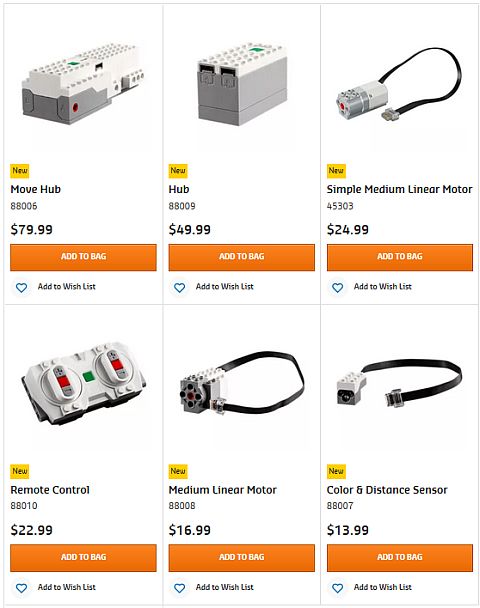
The previously used LEGO Power Functions system is going to be fully replaced by LEGO Powered Up. It is still used in some of the currently available LEGO Creator Expert sets and some LEGO Technic models, and the parts will be available until the end of 2020. Exceptions to this is the #8878 LEGO Power Functions Rechargeable Battery Box which was already retired at the end of 2018, and the #45517 LEGO Power Functions Transformer 10V DC, which will be retired at the end of 2021.
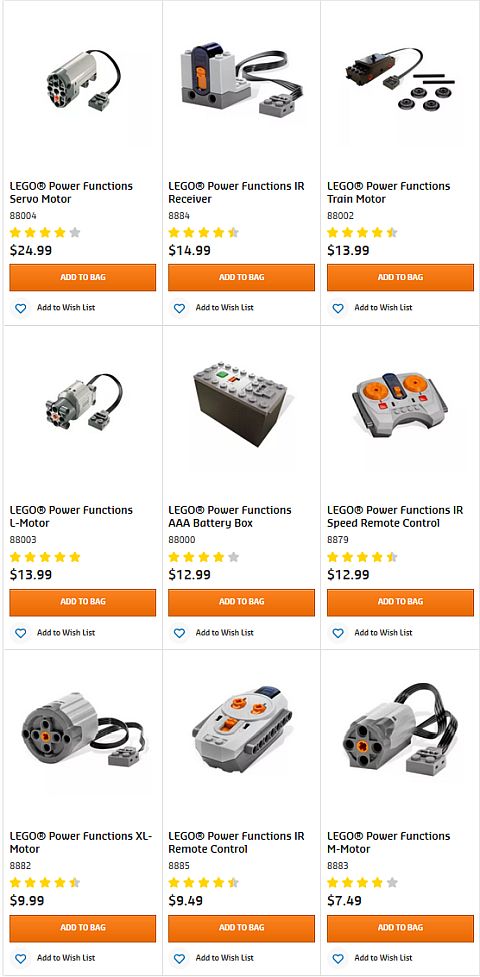
The main differences between the old and new systems are that LEGO Power Functions is controlled by an infrared-connected remote control and only includes simple components like the remote, motors, battery box, and lights, while LEGO Powered Up is controlled by either a remote or an app via Bluetooth connection and includes sensors and interactive motors in addition to simple components. While some components of the two systems look similar, the plugs are different and the parts are not compatible. There are no plans at this point to make conversion cables between old and new systems.
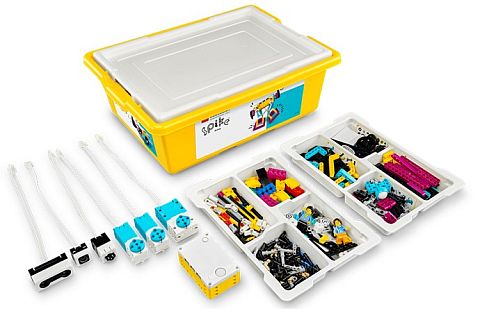
LEGO Education WeDo 2.0 and LEGO BOOST are robotics systems but they use many of the same components and the same connectors as LEGO Powered Up. They have their own apps, but LEGO BOOST can also be controlled by the LEGO Powered Up app, and LEGO BOOST components can be controlled from the LEGO Powered Up Hub via the app. The LEGO Education WeDo 2.0 Hub can’t be updated, but the sensors are compatible with both LEGO Powered Up and LEGO BOOST. At this point, it is not known if LEGO Education SPIKE Prime and LEGO Technic Connect+ will be compatible with the other systems and have separate apps. They do have the same plugs, so there is hope.
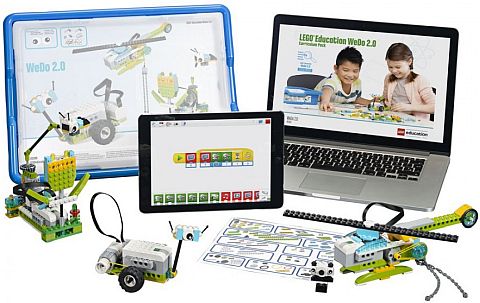
Currently, the compatibility of the various apps and remotes is quite complicated. For example, the LEGO BOOST app with the #88006 LEGO BOOST Hub can control the #88008 LEGO Powered Up Medium Linear Motor, and the #88007 LEGO Powered Up Color & Distance Sensor, but it does not work with the #88005 LEGO Powered Up LED Light, the #88011 LEGO Powered Up Train Motor, and the #45303 LEGO Powered Up Simple Medium Linear Motor. And of course, the app can also control the hub’s two internal motors and tilt sensor.
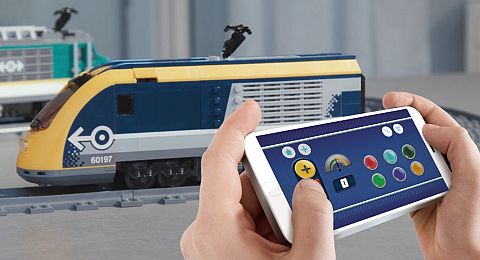
The LEGO Powered Up app with the Batmobile sub-app and the #88009 LEGO Powered Up Hub can control the #88011 LEGO Powered Up Train Motor, the #45303 LEGO Powered Up Simple Medium Linear Motor, and the #88008 LEGO Powered Up Medium Linear Motor. It can also connect to and control the two internal motors of the #88006 LEGO BOOST Hub, but it does not work with the #88005 LEGO Powered Up LED Light, and the #88007 LEGO Powered Up Color & Distance Sensor.
Using the LEGO City trains sub-app of the LEGO Powered Up app with the #88009 LEGO Powered Up Hub can control the #88011 LEGO Powered Up Train Motor and the #88005 LEGO Powered Up LED Light. The combination can also connect to the #88006 LEGO BOOST Hub and control one train motor and one light connected to the two external outputs. However, it does not work with the #45303 LEGO Powered Up Simple Medium Linear Motor, the #88008 LEGO Powered Up Medium Linear Motor, and the #88007 LEGO Powered Up Color & Distance Sensor.
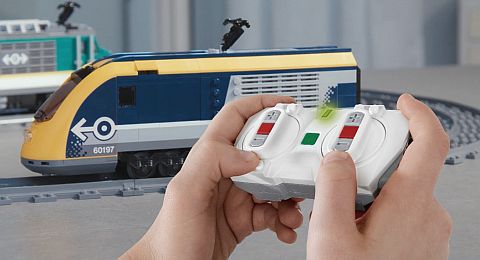
The #88010 LEGO Powered Up Remote Control can connect to the #88009 LEGO Powered Up Hub and control the two outputs. It is interesting to note that the remote has different effect on the different motors, so you may need to play with it to see what the buttons on the remote do to the motors. The LEGO BOOST Hub cannot be controlled with the remote.
It’s also important to mention that the LEGO Powered Up app and the LEGO BOOST app can only connect to a single hub, however, the remote can connect up to five different hubs and have ten channels of control. This is useful to know for more complex creations and large train layouts.
As you can see, it’s still not clear how and to what extent all the new powered and robotics systems will work together. They all use the same type of plugs, but this does not guarantee that they are always compatible. In addition, having different apps for the different systems is not very user-friendly either. It appears that LEGO’s idea is to keep these systems mostly in their own environments but also keep them somewhat compatbiel, and it will be up to the LEGO fan community to provide a definitive guide on how the systems work (or not work) with each other.
There are already some very informative YouTube videos comparing LEGO Power Functions and LEGO Powered Up, and testing out the capabilities and compatibility of LEGO Powered Up, LEGO BOOST, and LEGO Education WeDo 2.0 via various tutorials. The next big step is going to be when the LEGO Education SPIKE Prime and the LEGO Technic Control+ systems get released later this year. Once they are available, it will become clear how all of these systems fit (or not fit) together.
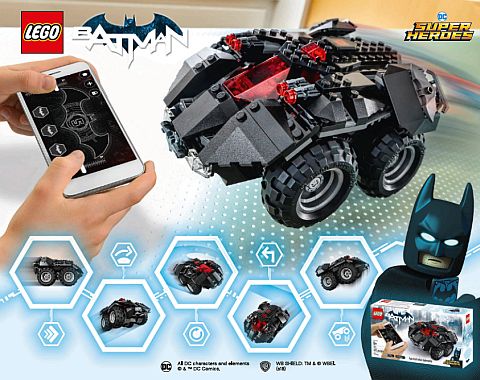
If you would like to test out some of the new powered and robotics options, the #60197 LEGO City Passenger Train and the #60198 LEGO City Cargo Train are the simplest to work with. They are set up similarly as the previous LEGO Power Functions trains, and can be controlled either by the app or the remote, with the app offering some additional options compared to the standard remote (i.e. sound effects). If you would like to try something a bit more advanced and different, the #76112 LEGO DC Super Heroes App-Controlled Batmobile is a good option. It comes with two motors powered by the Bluetooth-controlled battery hub and allows some advanced maneuvering via the app. And, if you want to get into robotics, the #17101 LEGO BOOST Creative Toolbox will get your started. Personally, I would not recommend the LEGO Education WeDo 2.0 kit for casual users, as it is a curriculum-based system primarily designed for schools. However, if you are an advanced user who wants to test out all the new powered and robotics options, you might want to give it a try.
It is also a good strategy to just wait until all the new systems are introduced, see the pros and cons of each of them as well as their compatibility (or lack of). Many knowledgeable LEGO fans are investing time and resources into testing out these new systems so they can share their findings with the rest of us. Good resources to keep yourself up-to date are the LEGO Powered Up website, the LEGO Powered Up device guide and FAQ page, as well as YouTube channels like Sariel’s LEGO Workshop, blogs like RacingBrick.com, and forums like the LEGO Powered Up section at EuroBricks.
What do you think? How do you like the new LEGO powered and robotics systems? Do you have any of them already, or are you planning to try them out in the near future? Feel free to share your thoughts and discuss in the comment section below!
And you might also like to check out the following related posts:












What I don’t like is that they all have their own apps. Why can’t they put all of them under the same app with sub apps? There are only so many apps I can fit on my phone. I like the new website. I hope they will keep it updated and explain how parts are compatible.
Yes, having so many LEGO apps is becoming a problem. I heard others mentioning this as well. Time will tell if they are able to consolidate them.
I’m going to wait some (probably until the end of the year) before investing in Powered UP. Thanks for letting us know how long PF is going to be available. It’s a real bummer the rechargeable battery is no longer available.
Yes, the rechargeable battery will be sorely missed. It was expensive, but very good. And it offered additional control options compared to the regular battery box.
I’m also in the wait and see crowd. The only exception might be if Lego releases a really good train with Powered Up already included. Because trains come with a regular remote, I don’t mind trying it out. I understand Lego wanted to jump on the app bandwagon, but I don’t like it.
They really should release a compatibility plug and wire between power functions and powered up, so the motors could still be used. Lego parts supposed to be all part of the same system and backward compatible. And this is my worry about the new systems too. How long are they going to support it? They are expensive, they depend on an app, if I invest in it, I’m not confident Lego will provide support.
There is a push for an adaptor plug on the Ambassador Forum, so LEGO is definitely aware the community wants it. Whether they will listen is another matter. I agree that there is some risk with investing in the app-controlled systems and loosing support for the app. You can always just stay with the components that can be controlled by the traditional remote.
If the Batmobile would be another vehicle, I would try it out. I don’t like that it doesn’t look like the Batmobile but it’s still licensed as a Batmobile vehicle. I just want a quality remote controlled Lego car with the new PF 2.0.
You might consider playing around with LEGO BOOST, as it includes non-licensed models. And there are also LEGO Technic vehicles coming with the new system this summer.